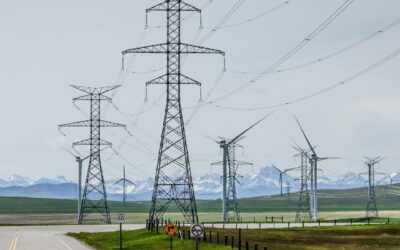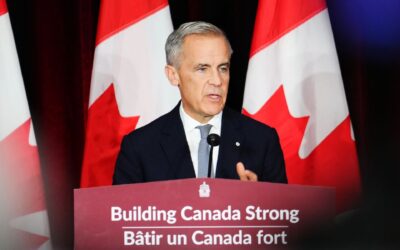Abundant, clean, and affordable electricity is increasingly a must-have for local economic development. Unfortunately, Ontario is learning this lesson the hard way.
The province has already lost out on economic growth and job opportunities thanks, in part, to insufficient electricity supply. But capacity isn’t the province’s only problem. Although Ontario’s electricity grid is touted as one of the world’s cleanest, greenhouse gas emissions from power generation are set to rise as nuclear plants come offline for refurbishment or retirement and natural gas plants ramp up in their place.
If the government of Ontario is committed to making the province “open for business”, it needs to get serious about building out and cleaning up its electricity system in a cost-effective way.
There’s reason to be optimistic
While electricity system modernization is no small feat, a first—and relatively simple—place to start is reforming the province’s long-term energy planning framework.
The good news on this front is that Ontario isn’t starting from scratch. In fact, the province has a long (albeit complicated) history of developing long-term energy plans, starting with the requirement under the 1998 Electricity Act to release an Integrated Power System Plan—the predecessor to the current Long-Term Energy Plan.
Yet, given the state of the province’s electricity system, Ontario’s long-term planning framework clearly needs a re-think.
Fortunately, the government is on the same page. In early 2021, the province paused the Long-Term Energy Plan process and launched consultations to refocus it with an eye to increased predictability, transparency, and reliability of decision making. How exactly these reforms play out matters a lot for the future of the electricity system.
Four ways to improve Ontario’s energy planning process
The Canadian Climate Institute has done a lot of thinking about how to improve governance structures and processes to set up electricity systems for success. Here, we outline four ways the government of Ontario can upgrade its energy planning framework and, in doing so, support economic development.
- Clarify long-term emissions targets
While Ontario has a 2030 emissions target, it doesn’t have any longer-term milestones. Long-term targets provide clarity to investors and system actors about the future direction of climate policy and the electricity system. Clarifying the province’s climate targets is an important first step to laying a strong foundation for electricity system planning.
- Broaden the core mandates of the energy board and system operator to include delivery on climate goals
Currently the Ontario Energy Board (OEB) and Independent Electricity System Operator (IESO) do not have clear mandates to consider climate change in their decision-making processes. In practice, this means that their core objectives of reliability and economic efficiency can be interpreted as being at odds with net zero-consistent investments—like expanding clean electricity generation or building new transmission infrastructure—as they may raise short-term costs to consumers.
To reduce uncertainty, the government should clarify the mandates of the OEB and IESO to include climate objectives—both emissions reductions and resilience to climate impacts—while maintaining their core mandates of reliable and cost effective service.
- Resume and revamp long-term planning to guide the work of system actors
In theory, Ontario’s energy planning process is governed by the Long-Term Energy Plan, which outlines the government’s priorities and objectives for the sector. The government may issue directives to the IESO and OEB to implement components of the Long-Term Energy Plan, and those implementation plans are subsequently reviewed and approved by the government. In practice, however, the government has adopted a more ad hoc approach, issuing over a hundred directives to the IESO and OEB. This unpredictable process hinders system planning, increases the risk of political intervention, and hurts economic development, since the private sector lacks certainty about decision making.
The government should continue to provide a high-level vision of the sector through a comprehensive energy plan—whether under the Long-Term Energy Plan moniker or otherwise. The plan should clarify things like targets for electrification, the role of the gas network, and forecasted electricity demand. It should provide quantitative specifics while also acknowledging uncertainty, using ranges and scenarios. And it should include implementation timelines, roles and accountabilities, and metrics of success. At the same time, the plan should not be overly prescriptive, providing the IESO and OEB with the mandate and flexibility to implement the government’s vision in a way that maintains reliability and affordability.
Finally, the current planning and decision-making processes surrounding the Long-Term Energy Plan lack transparency and accountability. One solution is to give the OEB a greater oversight function, including reviewing IESO plans or other parts of the planning process.
- Commission periodic technical pathway reports
Earlier this year, the Ontario government announced plans to commission an independent pathway study to understand how to prepare the energy system for electrification. While this study appears to be a one-time thing, the government should consider commissioning periodic assessments to ensure information remains relevant and useful to decision makers and system planners. With technology options and costs ever-changing, these assessments should be revisited every three to five years. To enhance credibility and independence, the studies should also be developed by arms-length government agencies, academic researchers, or trusted research institutes.
A place to grow
Clean electricity is essential for maintaining Ontario’s status as a place for business to grow. But transforming a provincial electricity system won’t happen overnight. Amendments to the province’s energy planning framework can help bring long-term goals—economic, environmental, social, or otherwise—into focus, and ensure all system actors are pulling in the same direction. If Ontario misses the mark on this governance reform, the electricity system could face growing challenges, with serious implications for economic development, climate progress, and the well-being of Ontarians.








